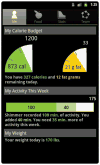Healthy apps: mobile devices for continuous monitoring and intervention
- PMID: 24233190
- PMCID: PMC4930358
- DOI: 10.1109/MPUL.2013.2279620
Healthy apps: mobile devices for continuous monitoring and intervention
Abstract
It is now known that nearly half of the toll that illness takes in developed countries is linked to four unhealthy behaviors: smoking, excess alcohol intake, poor diet, and physical inactivity. These common risk behaviors cause preventable, delayed illness that then manifests as chronic disease, requiring extended medical care with associated financial costs. Chronic disease already accounts for 75% of U.S. health-care costs, foreshadowing an unsustainable financial burden for the aging population [1]. We are facing an urgent need to re-engineer health systems to improve public health through behavior change, and technology-supported behavioral change interventions will be a part of 21st-century health care. As new technical capabilities to observe behavior continuously in context make it possible to tailor interventions in real time, the way we understand and try to influence behavior will change fundamentally.
Figures




References
-
- World Health Organization. 2008–2013 Action Plan for the Global Strategy for the Prevention and Control of Noncommunicable Diseases. Vol. 36. Geneva: WHO; 2008.
-
- Glanz K, Bishop DB. The role of behavioral science theory in development and implementation of public health interventions. Annu Rev Pub Health. 2010;31:399–418. - PubMed
-
- Rivera DE. Optimized behavioral interventions: What does system identification and control engineering have to offer?. Proc. 16th Int. Federation of Automatic Control (IFAC) Workshop on System Identification (SYSID 2012); pp. 882–893.
-
- Vassileva J. Motivating participation in social computing applications: A user modeling perspective. User Model User-Adapt Interact. 2012 Mar;22:177–201.
MeSH terms
Grants and funding
LinkOut - more resources
Full Text Sources
Other Literature Sources
Research Materials

